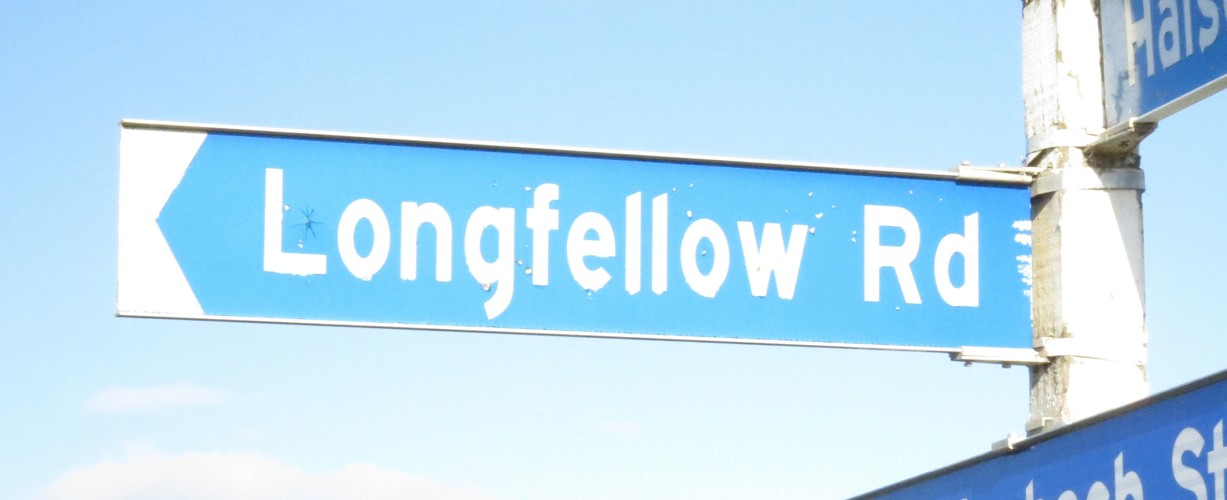 Longfellow Road sign (2020). Rachel Sonius. Word on the street image collection.
Longfellow Road sign (2020). Rachel Sonius. Word on the street image collection.
 Longfellow Road sign (2020). Rachel Sonius. Word on the street image collection.
Longfellow Road sign (2020). Rachel Sonius. Word on the street image collection.
Henry Wadsworth Longfellow was one of the most famous poets of the Victorian era.
Born in the United States in 1807, he was a professor at Harvard and fluent in 15 languages when he became a celebrity in the 1840s. His long poem based on Native American legend, “The song of Hiawatha”, sold 4000 copies on its first day alone and spawned Hiawatha-branded tobacco, bicycles, soap, potato sacks, thermometers and biscuit tins. His work was hugely popular throughout the English-speaking world (admirers included Abraham Lincoln and Charles Dickens) and fans flocked to his home in Massachusetts every year to meet him.
Longfellow was so renowned that he even had a street named after him in Opunake. The first mention of Longfellow Road appeared less than a decade after the town was laid out in 1867 and by the early 1900s it had been metalled and given a footpath. A telephone wire was installed by 1910, gas lighting in 1912 (replaced by electric street lights in 1917) and an underground telegraph cable laid in 1935.
Flax and lupins surrounding the road were cut back over the decades, although blackberries and gorse remained an issue, with letters complaining about the overgrown state of certain town sections sent to the editor of the Opunake Times as late as the 1920s. Drainage was also a problem, with the road often flooding, and constant requests for repairs made by residents to the local board. Opunake’s primary and secondary schools dominated the upper part of Longfellow Road from the time they were built, in 1881 and 1928 respectively.
Longfellow was still selling 1000 books a week when he died in 1882. The Taranaki Herald described him in its obituary as “an ornament to modern literature” and many readers mourned his passing. After meeting Longfellow in 1868, Queen Victoria, amazed to see her servants jostling for glimpse of him, declared that “Such poets wear a crown that is imperishable”. But Longfellow’s fame proved more perishable than expected. His work came to be compared unfavourably with that of the likes of Walt Whitman and Emily Dickinson and his reputation collapsed, an influential critic declaring in 1915 that “Longfellow is to poetry what the barrel-organ is to music”.
But New Zealanders were not so quick to forget, and Longfellow’s poetry was still quoted here many years after his death, with radio adaptations of his poems broadcast well into the 1930s.
This story was originally published in the Taranaki Daily News.
Please do not reproduce these images without permission from Puke Ariki.
Contact us for more information or you can order images online here.